Andrés Muñoz-Jaramillo
Probabilistic solar flare forecasting using historical magnetogram data
Aug 29, 2023Abstract:Solar flare forecasting research using machine learning (ML) has focused on high resolution magnetogram data from the SDO/HMI era covering Solar Cycle 24 and the start of Solar Cycle 25, with some efforts looking back to SOHO/MDI for data from Solar Cycle 23. In this paper, we consider over 4 solar cycles of daily historical magnetogram data from multiple instruments. This is the first attempt to take advantage of this historical data for ML-based flare forecasting. We apply a convolutional neural network (CNN) to extract features from full-disk magnetograms together with a logistic regression model to incorporate scalar features based on magnetograms and flaring history. We use an ensemble approach to generate calibrated probabilistic forecasts of M-class or larger flares in the next 24 hours. Overall, we find that including historical data improves forecasting skill and reliability. We show that single frame magnetograms do not contain significantly more relevant information than can be summarized in a small number of scalar features, and that flaring history has greater predictive power than our CNN-extracted features. This indicates the importance of including temporal information in flare forecasting models.
Efficient labeling of solar flux evolution videos by a deep learning model
Aug 29, 2023Abstract:Machine learning (ML) is becoming a critical tool for interrogation of large complex data. Labeling, defined as the process of adding meaningful annotations, is a crucial step of supervised ML. However, labeling datasets is time consuming. Here we show that convolutional neural networks (CNNs), trained on crudely labeled astronomical videos, can be leveraged to improve the quality of data labeling and reduce the need for human intervention. We use videos of the solar magnetic field, crudely labeled into two classes: emergence or non-emergence of bipolar magnetic regions (BMRs), based on their first detection on the solar disk. We train CNNs using crude labels, manually verify, correct labeling vs. CNN disagreements, and repeat this process until convergence. Traditionally, flux emergence labelling is done manually. We find that a high-quality labeled dataset, derived through this iterative process, reduces the necessary manual verification by 50%. Furthermore, by gradually masking the videos and looking for maximum change in CNN inference, we locate BMR emergence time without retraining the CNN. This demonstrates the versatility of CNNs for simplifying the challenging task of labeling complex dynamic events.
* 16 pages, 7 figures, published in Nature Astronomy, June 27, 2022
Homogenising SoHO/EIT and SDO/AIA 171Å$~$ Images: A Deep Learning Approach
Aug 20, 2023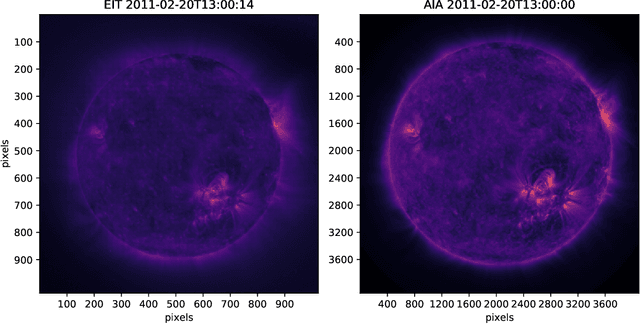
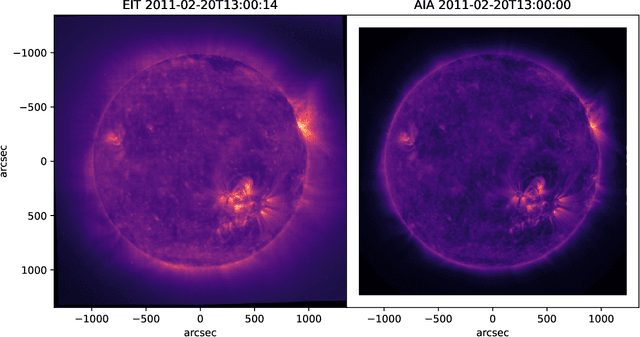
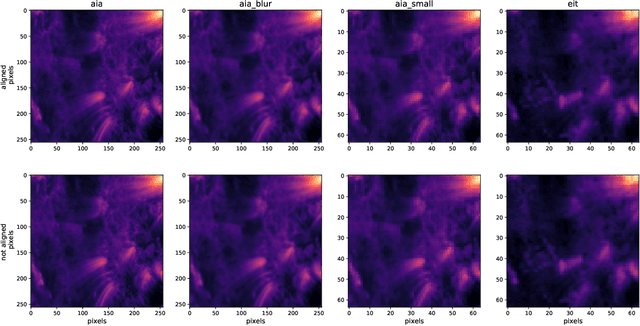
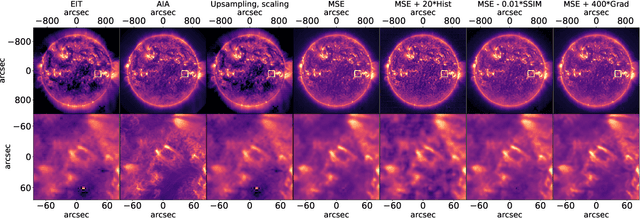
Abstract:Extreme Ultraviolet images of the Sun are becoming an integral part of space weather prediction tasks. However, having different surveys requires the development of instrument-specific prediction algorithms. As an alternative, it is possible to combine multiple surveys to create a homogeneous dataset. In this study, we utilize the temporal overlap of SoHO/EIT and SDO/AIA 171~\AA ~surveys to train an ensemble of deep learning models for creating a single homogeneous survey of EUV images for 2 solar cycles. Prior applications of deep learning have focused on validating the homogeneity of the output while overlooking the systematic estimation of uncertainty. We use an approach called `Approximate Bayesian Ensembling' to generate an ensemble of models whose uncertainty mimics that of a fully Bayesian neural network at a fraction of the cost. We find that ensemble uncertainty goes down as the training set size increases. Additionally, we show that the model ensemble adds immense value to the prediction by showing higher uncertainty in test data that are not well represented in the training data.
RotNet: Fast and Scalable Estimation of Stellar Rotation Periods Using Convolutional Neural Networks
Dec 04, 2020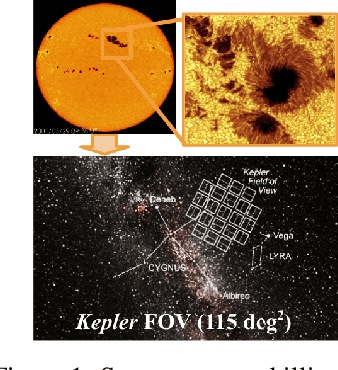

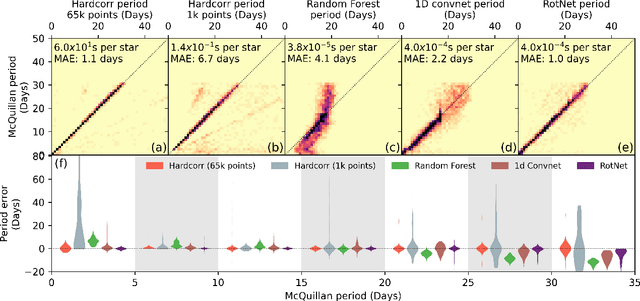
Abstract:Magnetic activity in stars manifests as dark spots on their surfaces that modulate the brightness observed by telescopes. These light curves contain important information on stellar rotation. However, the accurate estimation of rotation periods is computationally expensive due to scarce ground truth information, noisy data, and large parameter spaces that lead to degenerate solutions. We harness the power of deep learning and successfully apply Convolutional Neural Networks to regress stellar rotation periods from Kepler light curves. Geometry-preserving time-series to image transformations of the light curves serve as inputs to a ResNet-18 based architecture which is trained through transfer learning. The McQuillan catalog of published rotation periods is used as ansatz to groundtruth. We benchmark the performance of our method against a random forest regressor, a 1D CNN, and the Auto-Correlation Function (ACF) - the current standard to estimate rotation periods. Despite limiting our input to fewer data points (1k), our model yields more accurate results and runs 350 times faster than ACF runs on the same number of data points and 10,000 times faster than ACF runs on 65k data points. With only minimal feature engineering our approach has impressive accuracy, motivating the application of deep learning to regress stellar parameters on an even larger scale
Single-Frame Super-Resolution of Solar Magnetograms: Investigating Physics-Based Metrics \& Losses
Nov 04, 2019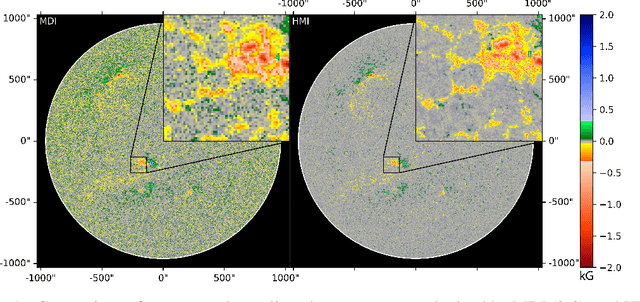

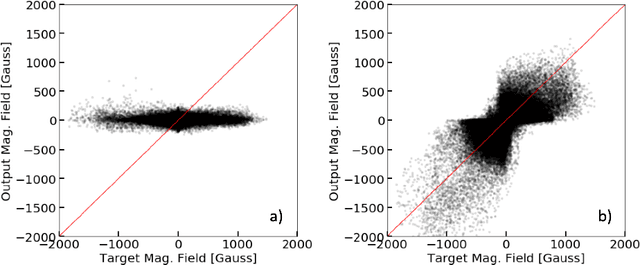

Abstract:Breakthroughs in our understanding of physical phenomena have traditionally followed improvements in instrumentation. Studies of the magnetic field of the Sun, and its influence on the solar dynamo and space weather events, have benefited from improvements in resolution and measurement frequency of new instruments. However, in order to fully understand the solar cycle, high-quality data across time-scales longer than the typical lifespan of a solar instrument are required. At the moment, discrepancies between measurement surveys prevent the combined use of all available data. In this work, we show that machine learning can help bridge the gap between measurement surveys by learning to \textbf{super-resolve} low-resolution magnetic field images and \textbf{translate} between characteristics of contemporary instruments in orbit. We also introduce the notion of physics-based metrics and losses for super-resolution to preserve underlying physics and constrain the solution space of possible super-resolution outputs.
Probabilistic Super-Resolution of Solar Magnetograms: Generating Many Explanations and Measuring Uncertainties
Nov 04, 2019
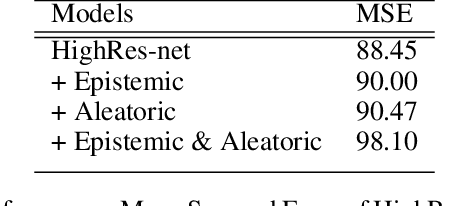

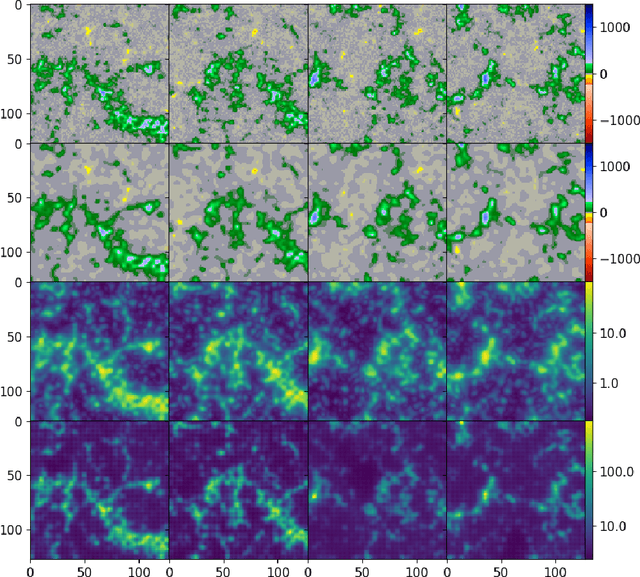
Abstract:Machine learning techniques have been successfully applied to super-resolution tasks on natural images where visually pleasing results are sufficient. However in many scientific domains this is not adequate and estimations of errors and uncertainties are crucial. To address this issue we propose a Bayesian framework that decomposes uncertainties into epistemic and aleatoric uncertainties. We test the validity of our approach by super-resolving images of the Sun's magnetic field and by generating maps measuring the range of possible high resolution explanations compatible with a given low resolution magnetogram.
A Machine Learning Dataset Prepared From the NASA Solar Dynamics Observatory Mission
Mar 11, 2019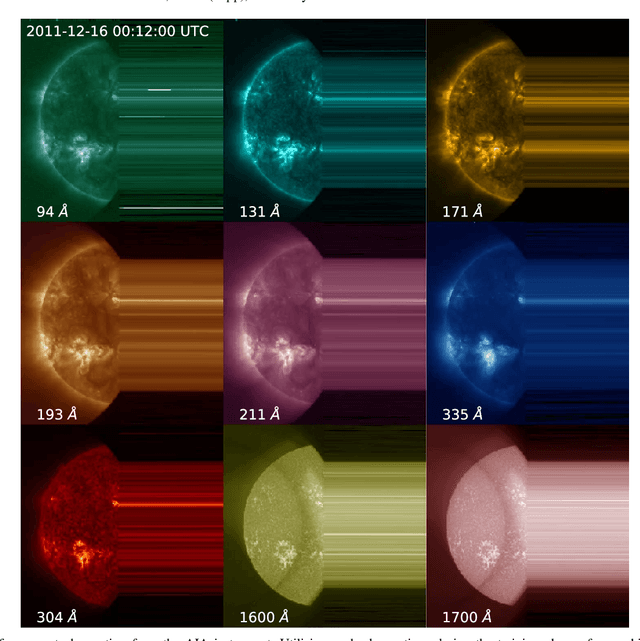
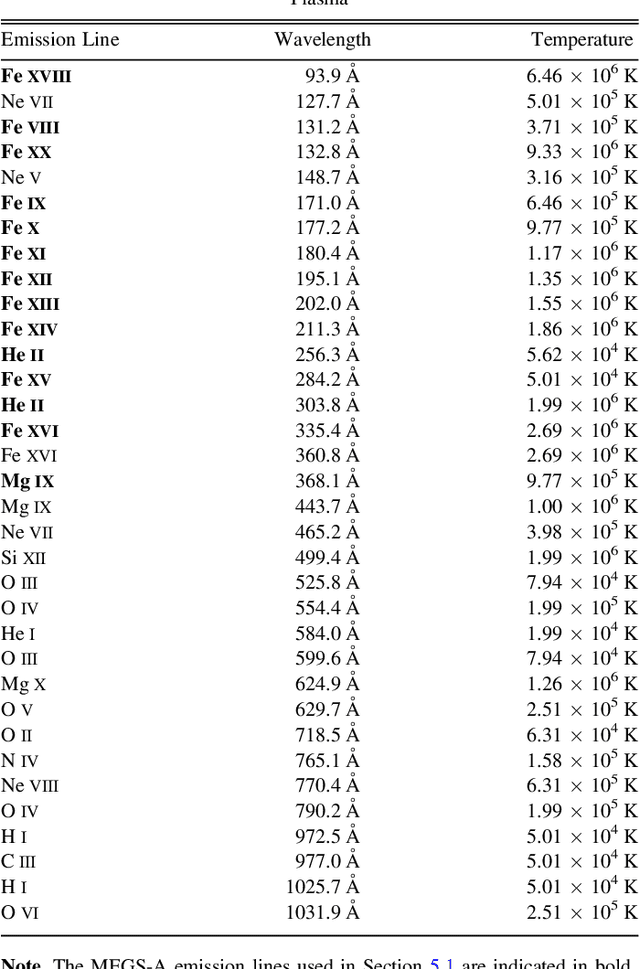
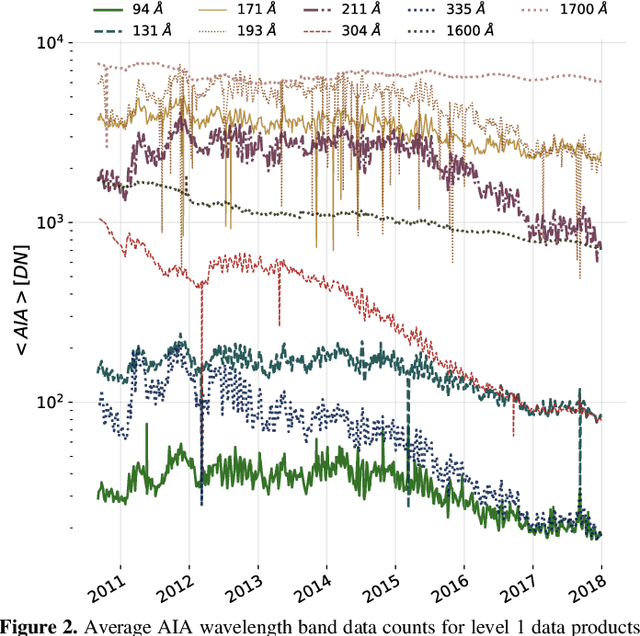

Abstract:In this paper we present a curated dataset from the NASA Solar Dynamics Observatory (SDO) mission in a format suitable for machine learning research. Beginning from level 1 scientific products we have processed various instrumental corrections, downsampled to manageable spatial and temporal resolutions, and synchronized observations spatially and temporally. We illustrate the use of this dataset with two example applications: forecasting future EVE irradiance from present EVE irradiance and translating HMI observations into AIA observations. For each application we provide metrics and baselines for future model comparison. We anticipate this curated dataset will facilitate machine learning research in heliophysics and the physical sciences generally, increasing the scientific return of the SDO mission. This work is a direct result of the 2018 NASA Frontier Development Laboratory Program. Please see the appendix for access to the dataset.
 Add to Chrome
Add to Chrome Add to Firefox
Add to Firefox Add to Edge
Add to Edge